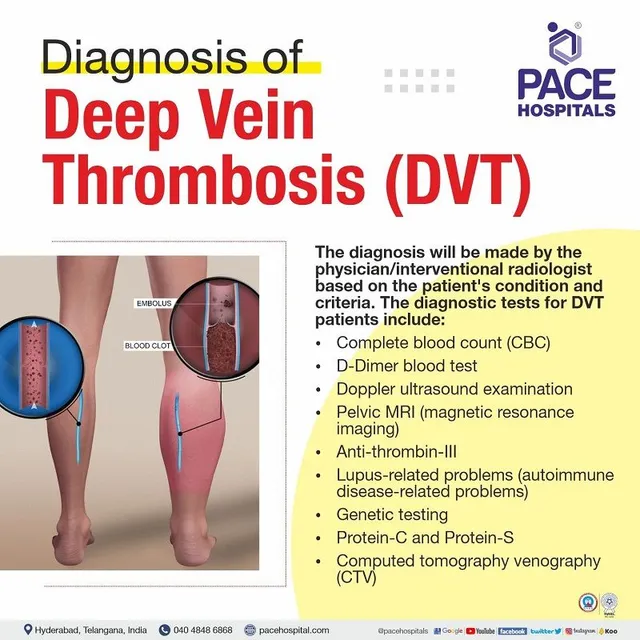Description
A DVT panel, or deep vein thrombosis panel, typically refers to a set of tests and evaluations used to diagnose and assess the risk of deep vein thrombosis (DVT), a condition where blood clots form in the deep veins of the body, usually in the legs. DVT can lead to serious complications if not promptly diagnosed and treated, including pulmonary embolism (when a clot travels to the lungs) and post-thrombotic syndrome (chronic leg pain and swelling).
The components of a DVT panel may include:
- D-dimer Test: D-dimer is a protein fragment present in the blood when a blood clot breaks down. A D-dimer test measures the level of D-dimer in the blood. Elevated levels may indicate the presence of a blood clot, but this test is not specific to DVT and can be elevated for other reasons as well.
- Duplex Ultrasound: Duplex ultrasound is a non-invasive imaging test that uses sound waves to create pictures of blood flow in the veins. It can detect the presence of blood clots in the deep veins of the legs or other parts of the body.
- Venous Doppler Study: This is another type of ultrasound study that specifically evaluates blood flow and detects blood clots in the veins.
- Venography: Venography is an imaging test where a contrast dye is injected into a vein, usually in the foot or ankle, and X-rays are taken to visualize the flow of blood through the veins. This test is less commonly used now due to the availability of non-invasive imaging techniques like ultrasound.
- Genetic Testing: In some cases, genetic testing may be performed to identify inherited conditions that increase the risk of blood clotting, such as Factor V Leiden mutation or prothrombin gene mutation.
- Blood Tests: Other blood tests may be performed to evaluate clotting factors and function, including tests for protein C and S deficiencies, antithrombin deficiency, and lupus anticoagulant.
- Clinical Assessment: A thorough medical history and physical examination are essential parts of evaluating the risk of DVT. Risk factors such as recent surgery, prolonged immobility, pregnancy, hormone therapy, cancer, and previous history of DVT or pulmonary embolism are considered.
The specific tests included in a DVT panel may vary depending on the individual’s medical history, symptoms, and clinical presentation. A healthcare provider will determine which tests are appropriate based on the patient’s situation. Prompt diagnosis and treatment are crucial for managing DVT and preventing complications.



Reviews
There are no reviews yet.